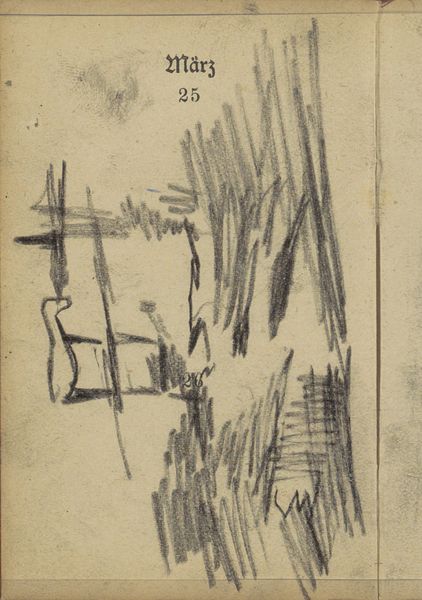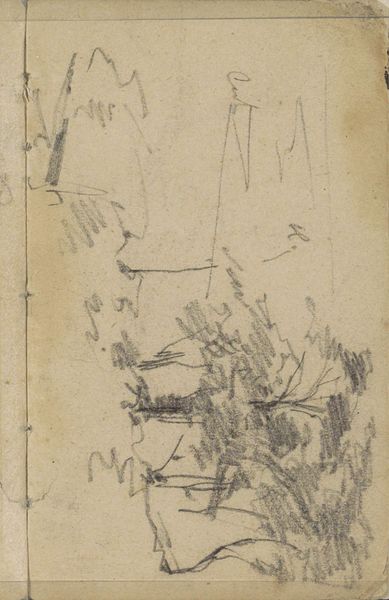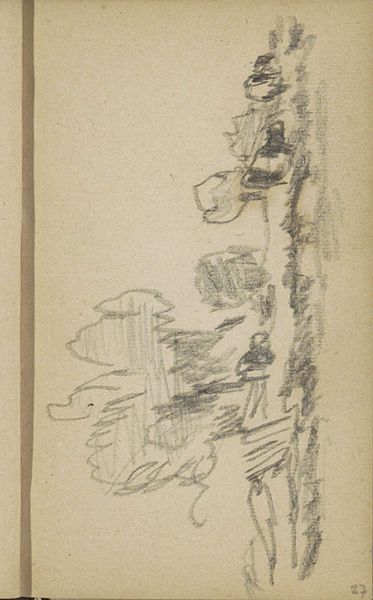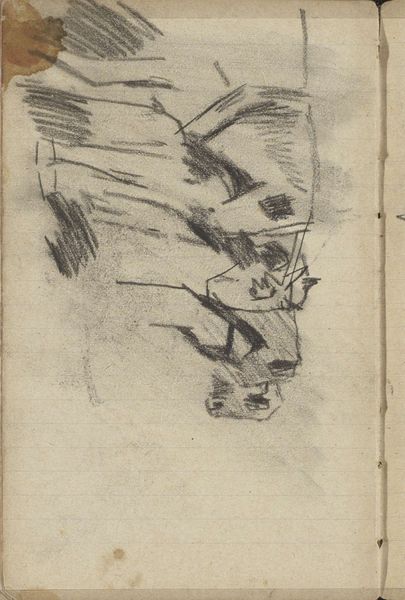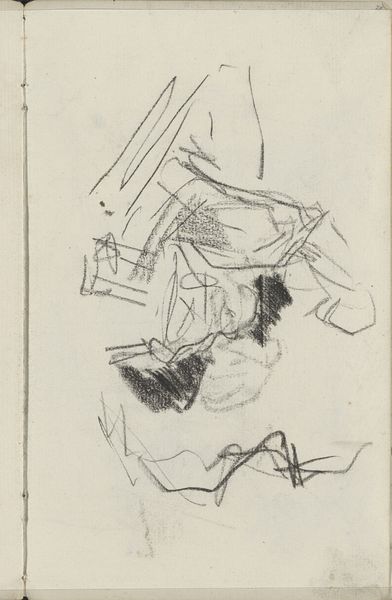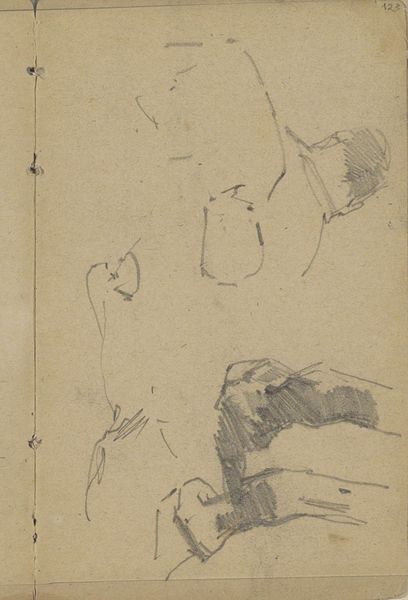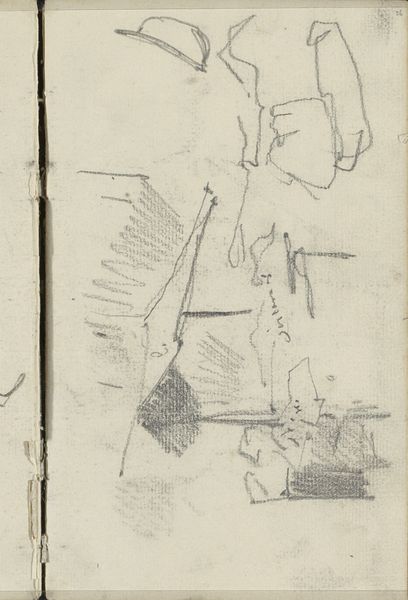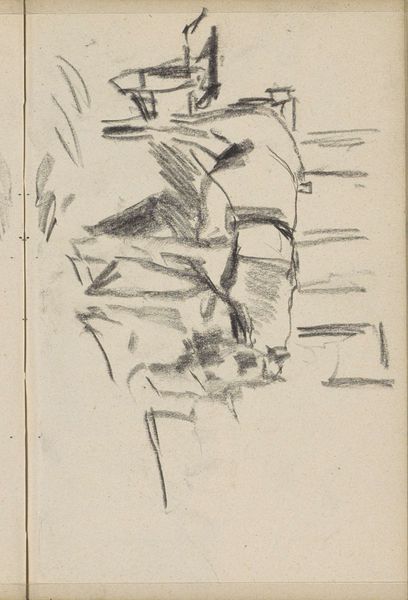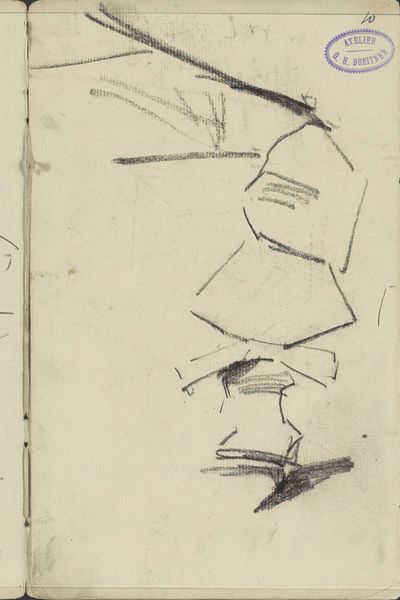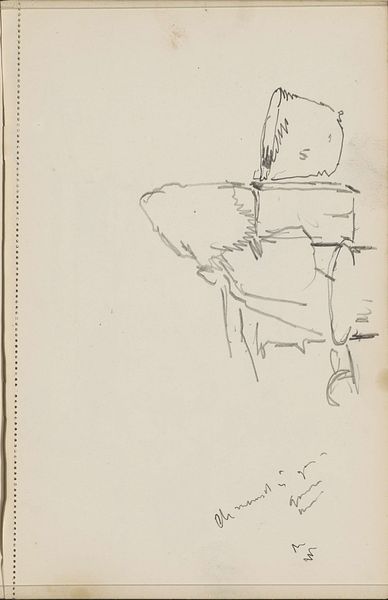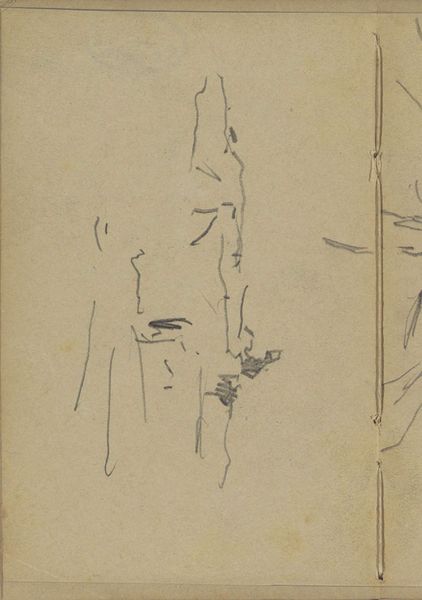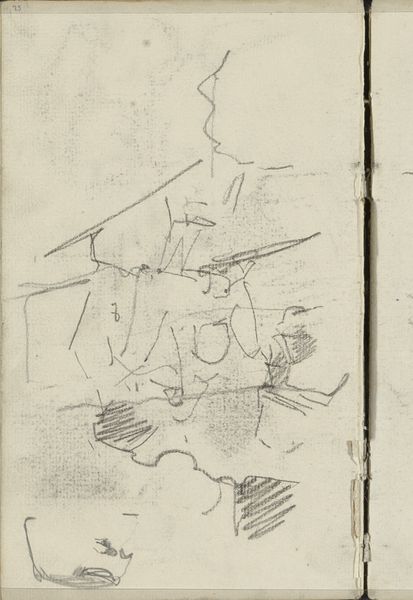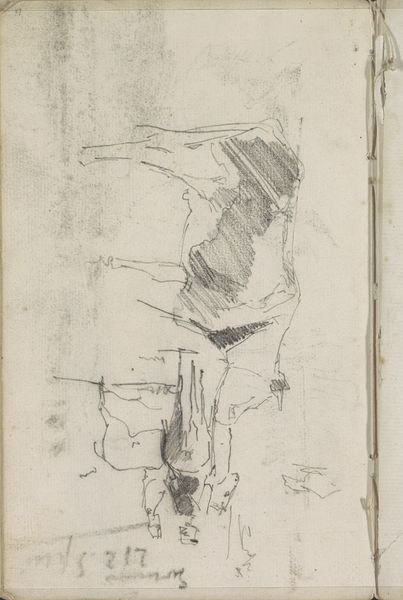
Copyright: Rijks Museum: Open Domain
Curator: Breitner's "Wolkenlucht," a cloudscape drawing from around the turn of the century, resides here at the Rijksmuseum. Graphite and pen on paper— it's such a seemingly simple thing. Editor: My first impression is restless—like a storm's just passed or one's on its way. It's all jagged lines and charcoal smudges on what looks like notebook paper. Very immediate. Curator: Immediate indeed! It's like catching Breitner in the act of thought, sketching what he saw right then and there. You can almost feel the breeze ruffling the page, smell the coming rain. It lacks the finesse of his paintings, of course. It's just this very direct capture of an atmosphere, of transience. The use of readily available materials really adds to that effect. Editor: And how interesting—a sketchbook aesthetic intersecting with high art! That lined paper makes you consider its journey, the artist’s hand… I'm curious about the role of industrial production in that kind of access—to paper, pencils—how that changed artistic practice and what got deemed worthy of being preserved as 'art.' Curator: Oh, definitely! It makes one wonder about the context in which these sketches were created. Breitner wasn't painting picturesque landscapes; he was documenting a rapidly industrializing Amsterdam. Perhaps these cloudscapes, snatched between cityscapes, served as his escape. I get a sense of melancholic awe. A reminder of nature's indifference to human progress. Editor: Right, because labor is also inscribed, subtly, in the support—those factory lines, a standardization and process that mirrored changes he captured in Amsterdam itself. Even landscape starts carrying signs of modern making! This isn't your Romantic sublime; it's an encounter framed by mass production. Curator: So it’s not only fleeting clouds but also the conditions in which these clouds are captured and consumed through art. It gives a tangible weight to something ephemeral. I love the way these quick strokes evoke such expansive emotions, it invites such rumination! Editor: Yes! It feels profoundly democratic to think that, as the infrastructure of art materials becomes available, artists’ visions become attuned not just to nature's grandeurs but the total picture – industry included. Curator: Makes me think, what skies will we be sketching with our own mass produced materials? Food for thought... Editor: Indeed. I'll be looking at the sky a little differently from now on.
Comments
No comments
Be the first to comment and join the conversation on the ultimate creative platform.
